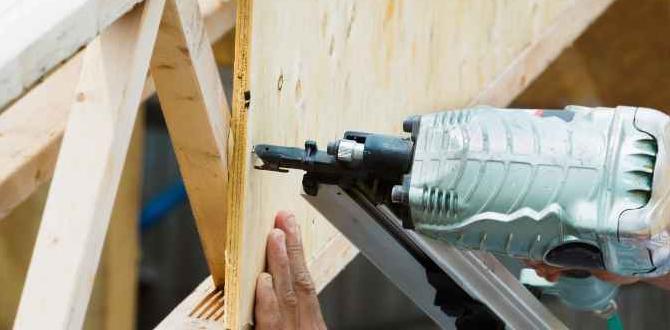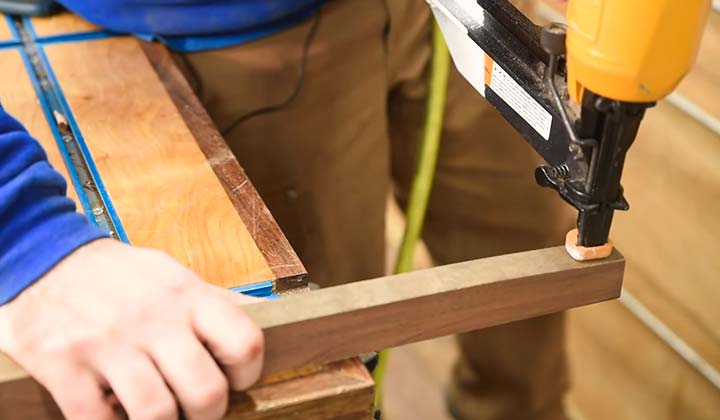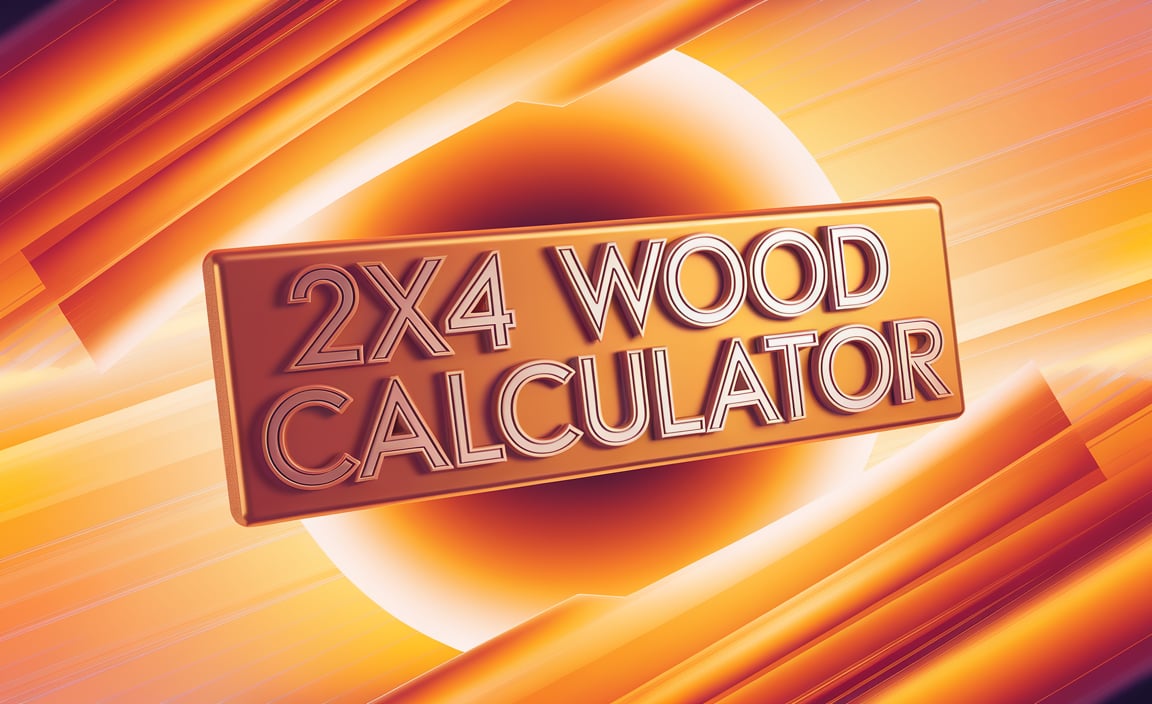Quick Summary:
Choosing the right magazine size for your nailer or stapler is crucial for project success. It simply means picking the magazine capacity that best fits your task – fewer refills for big jobs, lighter weight for detailed work. Think about the length of your fasteners and how many you’ll need handy to make the best choice.
Table of Contents
How to Choose Magazine Size: An Essential Guide for DIYers
Hey there, DIY enthusiasts! Jack Shaffer here, your go-to guy for all things woodworking and tools. Ever found yourself staring at a nailer or stapler, wondering what all those different magazine sizes really mean? It’s a common question, and honestly, it can feel a bit confusing at first. But don’t worry, choosing the right one is simpler than you think, and it makes a huge difference in getting your projects done smoothly and efficiently.
Think of your nailer’s magazine like your toolbox – you want the right tools for the job, right? The magazine is where your nails or staples live, ready to be fired. Its size affects how many fasteners you can load at once, which directly impacts how long you can work before having to stop and reload. Getting this choice right means fewer interruptions and more satisfaction with your finished project.
In this guide, we’ll break down exactly what magazine size is, why it matters, and how to pick the perfect one for your needs. We’ll look at different types, sizes, and how they relate to your projects, so you can feel confident and ready. Let’s dive in and make sure your next project runs like a well-oiled machine!
Understanding Nailer and Stapler Magazines
Before we get into choosing the size, let’s get a clear picture of what the magazine actually is and how it works.
The magazine on a nailer or stapler is essentially the holding chamber for your fasteners (nails, brads, staples, etc.). It’s designed to feed these fasteners one by one into the firing mechanism. The size of this magazine is primarily determined by two things: its capacity (how many fasteners it can hold) and its physical dimensions, which are often influenced by the length of the fasteners it’s designed to accept.
Different types of nailers and staplers have different magazine designs. For example:
- Straight Magazines: These are the most common and hold fasteners in a straight line.
- Angled Magazines: Designed to fit into tighter corners and awkward spaces, these magazines hold fasteners at an angle.
- Coiled Magazines: Typically found on roofing or framing nailers, these hold nails in a coil, offering a very high capacity.
The capacity is usually measured by the number of fasteners it can hold. A larger capacity means you can shoot more nails or staples before needing to reload, which is a big advantage for larger projects. However, a larger magazine can sometimes make the tool bulkier and heavier.
Why Magazine Size Matters for Your Projects
So, why should you pay attention to the magazine size? It’s not just a minor detail; it directly impacts your workflow and the overall experience of using your tool.
When you’re in the middle of a project, especially a bigger one, stopping to reload fasteners can really break your concentration and slow you down. If you’re building a deck, framing a wall, or even just putting up a lot of trim, a larger capacity magazine means you can keep working continuously for longer periods. This efficiency can save you a significant amount of time and frustration.
On the other hand, for smaller, more intricate jobs or when you need to maneuver the tool into tight spots, a smaller, more compact magazine can be a real advantage. A lighter tool with a less bulky magazine is easier to handle for extended periods and allows for greater precision in delicate work.
Think about it like this:
- Large Capacity Magazine: Great for repetitive tasks, long stretches of work, and projects where speed is key. Less time spent reloading, more time spent building.
- Small Capacity Magazine: Excellent for detailed work, maneuvering in tight spaces, and projects where precise control and a lighter tool are important.
The choice ultimately balances efficiency and convenience for the specific task at hand.
Key Factors to Consider When Choosing Magazine Size
When you’re standing in the tool aisle or browsing online, what should you be looking for? Here are the main factors to weigh:
1. The Type of Project You’re Doing
This is the most important factor. Are you building a large structure or working on a small craft?
- Large-Scale Projects (Framing, Decking, Siding): For these jobs, you’ll be driving hundreds, if not thousands, of fasteners. A high-capacity magazine is essential. This often means looking at framing nailers or siding nailers with coiled or very large straight magazines. Being able to shoot a lot of nails without reloading saves immense amounts of time and effort.
- Medium-Scale Projects (Trim Work, Cabinets, Fencing): For tasks like installing baseboards, putting up crown molding, or building fences, you’ll still be driving a good number of fasteners, but perhaps not with the same intensity as framing. A moderately large capacity magazine will be beneficial to keep your workflow smooth.
- Small-Scale Projects (Crafts, Picture Frames, Delicate Molding): If you’re working on small decorative items, model building, or installing fine trim where precision is paramount, a smaller magazine might be perfectly adequate. It keeps the tool lighter and more maneuverable, which is crucial for delicate work.
- Occasional DIYer: If you’re just tackling a few weekend projects here and there, a moderate capacity is usually a good all-around choice. It provides a balance between not having to reload constantly and not having an overly bulky tool.
2. Fastener Type and Length
The type and length of the fasteners your tool uses will directly influence the size and shape of the magazine.
- Nailers: Framing nailers use longer, thicker nails (like 2-3.5 inches) and typically have larger magazines to accommodate them and their higher count. Brad nailers and finish nailers use shorter, thinner nails (like 1-2.5 inches) and often have slimmer, less voluminous magazines. Pin nailers use very short, thin pins and have the most compact magazines.
- Staplers: Construction staplers for things like sheathing or roofing will have larger magazines for longer staples. Upholstery staplers or narrow-crown staplers for crafts will have smaller magazines for shorter staples.
Manufacturers design the magazine to hold a specific type and size of fastener efficiently. You can’t usually change the magazine size on a tool, but you choose the tool based on the fasteners you plan to use, which then determines the magazine size.
3. Tool Weight and Ergonomics
A larger magazine often means a heavier tool. This is something to consider, especially if you’ll be holding the tool for extended periods or working overhead.
- For Overhead Work or Long Use: A lighter tool with a smaller magazine might be preferable, even if it means reloading more often. Your arms and back will thank you!
- For Repetitive Tasks at Chest Height or Below: The extra weight from a larger magazine might not be as noticeable, and the benefit of fewer reloads can outweigh the slight increase in weight.
Always try to handle the tool if possible. Feel how the weight is distributed and how comfortable it is to grip. This is where looking at specifications on reputable sites like ToolReviews.com can be helpful, though hands-on experience is best.
4. Power Source (Pneumatic vs. Cordless)
While not directly about magazine size, the power source of your nailer can influence tool design and, therefore, magazine considerations.
- Pneumatic Nailers: These connect to an air compressor via a hose. The tool itself can be lighter and more compact because the power source is separate. The magazine size is purely about fastener holding capacity.
- Cordless Nailers (Battery-Powered): These house a battery pack, which adds weight and bulk. Manufacturers often try to balance battery size, motor power, and magazine capacity to create an ergonomic tool. Sometimes, a high-capacity magazine might come with a slightly heavier battery-powered nailer.
- Cordless Nailers (Fuel Cell/Gas Powered): Similar to battery-powered, these also have integrated power sources. Magazine considerations are similar to battery-powered tools, balancing capacity with overall tool size and weight.
Consider how the power source might affect the overall feel and manageability of the tool, in conjunction with its magazine size.
Common Nailer and Stapler Fastener Capacities
To give you a better idea, here’s a look at typical fastener capacities for common nailer and stapler types. Remember, “capacity” here often refers to the number a specific tool model can hold, which is directly tied to its magazine design.
Nailer Magazine Capacities (Typical Ranges)
| Nailer Type | Magazine Style | Typical Fastener Size | Typical Capacity Range | Best For |
| :—————– | :—————– | :——————– | :——————— | :————————————— |
| Framing Nailer | Straight/Angled | 2″ – 3.5″ Nails | 50 – 100 | Framing walls, decks, fences |
| Roofing Nailer | Coiled | 0.75″ – 1.75″ Nails | 100 – 150+ | Shingling roofs |
| Siding Nailer | Straight/Angled | 1.25″ – 2.5″ Nails | 75 – 150+ | Installing siding |
| Finish Nailer | Straight | 1″ – 2.5″ Nails | 100 – 200 | Trim, molding, cabinet installation |
| Brad Nailer | Straight | 0.75″ – 1.25″ Nails | 100 – 150 | Delicate trim, craft projects |
| Pin Nailer | Straight (very slim) | 0.5″ – 1″ Pins | 150 – 200+ | No-mark fastening, delicate crafts |
Stapler Magazine Capacities (Typical Ranges)
| Stapler Type | Magazine Style | Typical Fastener Size | Typical Capacity Range | Best For |
| :——————- | :————- | :———————— | :——————— | :—————————————— |
| Construction Stapler | Straight | 0.5″ – 2″ Staples | 75 – 150+ | Sheathing, house wrap, subfloors, roofing |
| Upholstery Stapler | Straight | 0.25″ – 0.75″ Staples | 80 – 120 | Upholstery, fabric projects |
| Narrow Crown Stapler | Straight | 0.5″ – 1.5″ Staples | 100 – 200 | Trim, paneling, craft projects |
These are general guides. Always check the specific tool’s specifications for exact capacities and compatibility with fastener types and lengths. Reputable manufacturers like DeWalt often provide detailed spec sheets for their tools.
Choosing the Right Tool Based on Magazine Size and Needs
Let’s walk through some common scenarios and how magazine size plays a role in selecting the right tool.
Scenario 1: Building a New Deck
You’re building a deck, which means you’ll be driving lots of fasteners into joists, beams, and decking boards. This is a high-volume task.
- Need: High fastener capacity, durability, power.
- Magazine Consideration: A framing nailer is ideal here. Look for models with magazines that hold at least 50-75 nails, preferably more if you can find them in less bulky designs. Roofing nailers, while coiled, are designed for nails and not typically used for framing structural elements due to nail type.
- Recommendation: A framing nailer with a substantial straight or angled magazine. Pneumatic models might offer a lighter tool with a high capacity.
Scenario 2: Installing Baseboard and Crown Molding
This is a more detailed job. You’ll be fitting pieces precisely and might need to work in various angles. Precision and a clean finish are important, but you’ll still use a fair number of fasteners.
- Need: Fine finish, maneuverability, moderate capacity.
- Magazine Consideration: A finish nailer or a brad nailer is appropriate. Finish nailers use 1.5″��2″ nails and are great for baseboards. Brad nailers use 1″��1.25″ nails and are better for delicate crown molding or smaller trim. Both typically have magazines holding 100-150 fasteners, which is a good balance for this kind of work. A smaller magazine makes the tool lighter for overhead work with crown molding.
- Recommendation: A finish nailer (for baseboards, chair rails) or a brad nailer (for crown molding, delicate trim) with a moderate capacity magazine. Battery-powered models offer convenience.
Scenario 3: Upholstering Furniture or Craft Projects
You’re working with fabric or thin wood, and the fasteners need to be small and discreet. The project might involve intricate shapes.
- Need: Small fasteners, precision, lightweight tool, good control.
- Magazine Consideration: An upholstery stapler or a narrow-crown stapler (for crafts) is perfect. These tools use short staples or brads, and their magazines are designed to be compact. Capacity might be around 80-120 staples/brads, which is usually more than enough for these types of detailed tasks. The smaller size allows for easy handling and precise placement.
- Recommendation: A narrow-crown stapler or an upholstery stapler. Electric or manual models are common.
Scenario 4: Occasional DIY Home Repairs and Projects
You’re not doing major renovations but want a tool for various quick fixes around the house – hanging shelves, repairing a chair, small fencing jobs.
- Need: Versatility, ease of use, decent capacity without being cumbersome.
- Magazine Consideration: A brad nailer or finish nailer often fits this bill. They can handle a variety of small to medium tasks. A magazine capacity of around 100 fasteners is generally a good compromise. It’s enough to get a few jobs done without constant reloading, but the tool remains relatively light and easy to store.
- Recommendation: A versatile brad nailer or a light-duty finish nailer. Battery-powered models are very convenient for occasional use.
Tips for Using Your Nailer’s Magazine Effectively
Once you’ve chosen your tool and its magazine, here are some tips to make sure you’re using it to its full potential:
- Keep it Clean: Dirt and debris can jam the magazine and cause misfires. Periodically clean the inside of the magazine and the feeding mechanism with a dry cloth.
- Use the Right Fasteners: Always use the type and size of fasteners recommended by the tool manufacturer. Using the wrong ones can damage the tool and lead to jams. For example, using brads in a finish nailer magazine can cause issues.
- Load Properly: Follow the manufacturer’s instructions for loading fasteners. Ensure they are seated correctly in the magazine and that the follower (the spring-loaded piece that pushes the fasteners) is engaged properly.
- Don’t Overload: While you want to take advantage of capacity, forcing too many fasteners into a magazine can cause them to bind or damage the magazine.
- Check the Follower: The follower is crucial for consistent feeding. Make sure it moves freely and isn’t damaged.
- Lubricate (if applicable): For pneumatic tools, ensure proper air pressure and occasional lubrication of the tool’s air inlet. This helps the entire mechanism, including the part that drives fasteners from the magazine. For electric tools, this is usually not required. Refer to your tool’s manual for specific maintenance needs which can be found on sites like OSHA’s guidance on nail gun safety, which often includes maintenance tips.
- Troubleshoot Jams Swiftly: If you experience a jam, turn off the tool and disconnect the power source (air hose or battery) before attempting to clear it. Never force jammed fasteners out.
Frequently Asked Questions (FAQ)
Q1: What is the “magazine size” on a nailer?
A1: The magazine size refers to the capacity of the tool’s fastener housing – in simple terms, how many nails or staples it can hold at once. It also dictates the types and lengths of fasteners that can be used.
Q2: Do all nailers have the same magazine size?
A2


